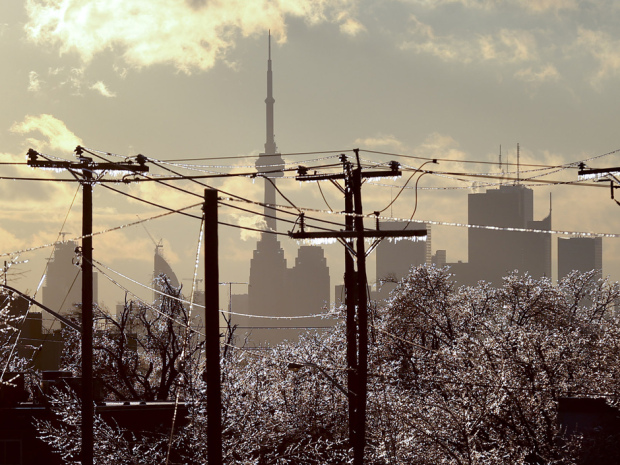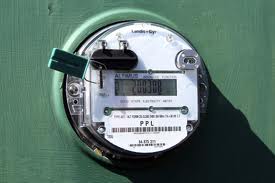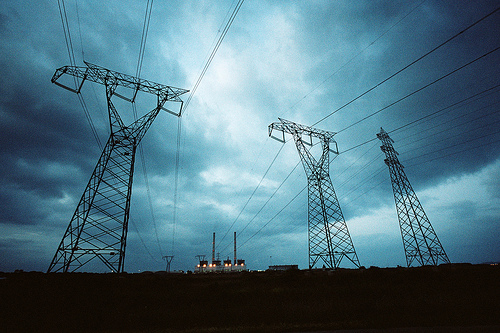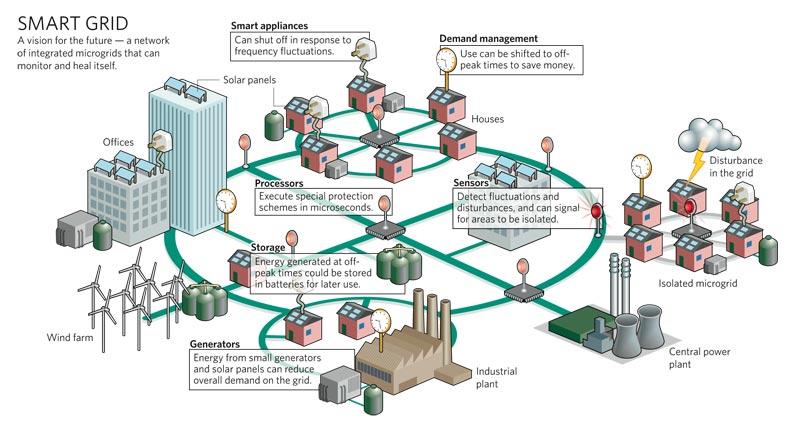December 26, 2013 – Part of almost any discussion on the future of power generation and distribution has included the mentioning of the smart grid. For those of you who don’t know the definition, it is a network that incorporates information and communications technology that provides instant feedback to utilities on the performance of all components within the power generation and distribution infrastructure.
Typically such a grid would include smart meters, depicted below, devices that can manage the amount of power entering a home to ensure efficiency in energy usage and minimize overloads that could lead to grid failures.
Smart grids are layered with low-energy radio-frequency monitors and sensors so that those operating the system have instant data on the health of every component involved in power distribution.
Traditionally power grids resemble a wheel with a central hub and radiating spokes. At the centre lies the power generator – a hydroelectric facility, a solar power plant, wind farm, nuclear, coal-fired, gas or oil-burning power plant. The power generated in these stations passes through a voltage step-up transformer to boost it. It then passes through heavy-duty cable transmission lines suspended from towers. The power is then fed into sub-stations which step-down the voltage and feed it to smaller satellite stations which step-down the voltage even further. The power at satellite sub-stations gets distributed to overhead wires with transformers on utility poles. The transformers represent the final step-down feeding electricity to homes and businesses either at 120 volts for our consumer electronics and lights, and 240 volts for appliances like your stove or clothes dryer. The electricity produced by the grid transmits at near-light-speed and is consumed as it is produced.
In a smart grid with smart meters designed to report outages, at the moment of a failure the provider would be instantly alerted. if smart sensors populated the grid the utility would be able to monitor the health of the distribution network in real time. If a transformer got hot the sensors would trigger an alarm. If a transmission line failed the sensors would immediately pinpoint where the break occurred. A smart grid with built-in redundancy would isolate the failure without affecting distribution to other consumers and would if possible reroute power around the point of failure to deliver power to the affected location. And if that were not possible the utility would dispatch a repair team within minutes with sufficient knowledge to correct the failure and restore power.
How could such a smart grid have helped here in Toronto where after 5 days more than 50,000 customers (125,000 people) remain in the cold and dark? Such a smart grid could not have stopped the storm. Toronto’s forest canopy would still have rained havoc on power transmission lines throughout the city. But such a smart grid would have provided an early warning system for detecting transformers stressed by the storm. Power could have been stepped down in areas where caution lights on sensor indicators suggested imminent failure. And when the lights went out such a smart grid would have identified every point of failure throughout the grid from main feeder lines to local residential connections.
In the past decade Toronto Hydro, the utility provider for the city, has gone about installing smart meters for residential homes and business. But the Toronto Hydro site buries the information on how these smart meter could be used to monitor power outages and shorten response times. Instead it seems that in selling consumers on smart meters we have been told how they will save us on our electricity bill. But the real truth is the smart meters aren’t saving consumers any money at all. What they have done is end the era of sending out staff to read meters. And smart meters have also made billing consumers much easier because the meters communicate when and how we use the power we receive from the utility.
So what can we conclude from the current state of the “smart” grid here in Toronto? Not too smart I’m afraid as far as service assurance. But plenty smart when it comes to sending you a bill. Could a smart grid have helped here in Toronto? The kind I have described fully equipped with sensors at all major points throughout the grid would have with absolute certainty. But that’s not the state of our grid today and since the funding of infrastructure largely comes from taxes and billing revenue it seems we are still far away from being willing to dip into our pockets so that we can get the promise that this technology can deliver. Maybe this is a wake up call for building our infrastructure to better withstand extreme weather events brought on by, I dare say it, climate change.














